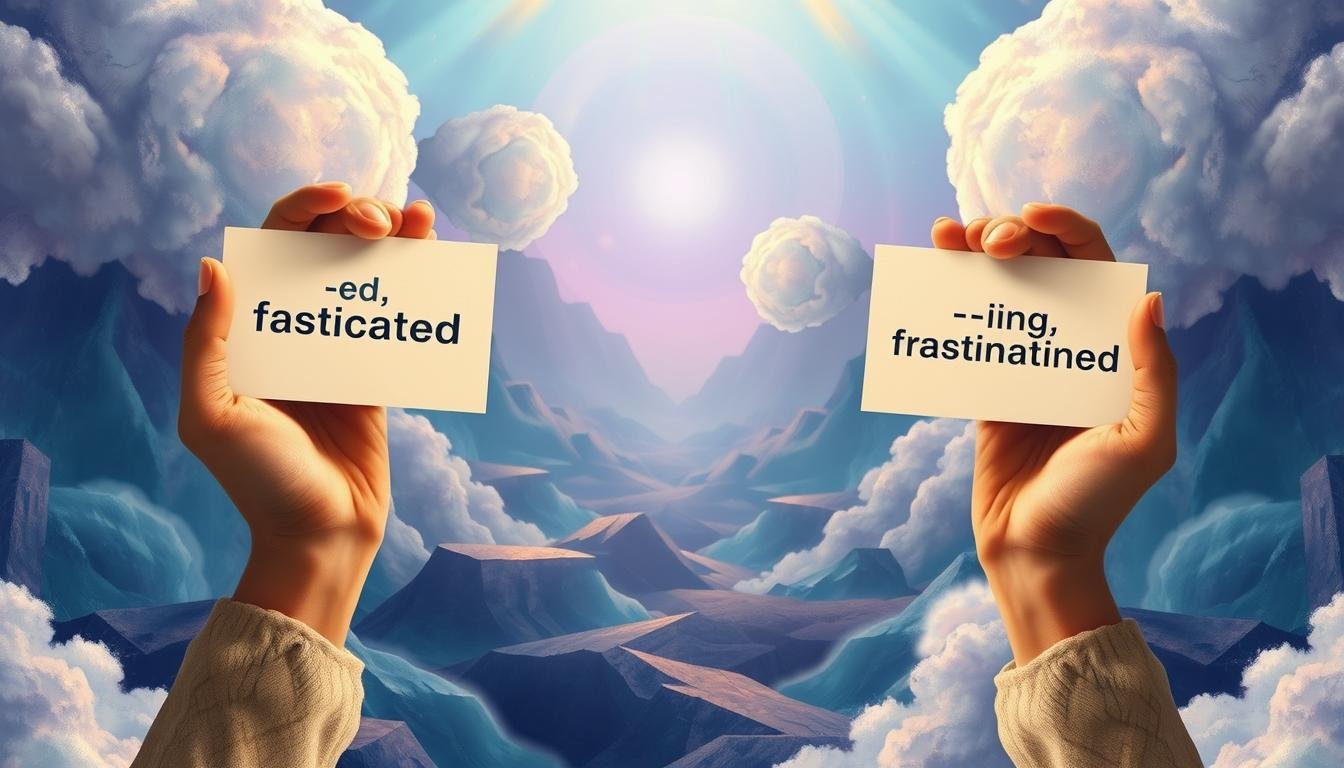Now Reading: Future Tense: Will, Be Going To, and Present Progressive
-
01
Future Tense: Will, Be Going To, and Present Progressive
Future Tense: Will, Be Going To, and Present Progressive

Your Guide to Future Tense: Will, Be Going To, and Present Progressive
Imagine planning a trip and wondering if to say, “I will book the tickets” or “I’m going to book the tickets.” Why does it matter? This article explains the three main ways to talk about the future in English.
Future time can be confusing, with will, be going to, and present progressive often mixed up. This guide helps you understand when to use each. “Will” shows decisions made now, “be going to” points to plans, and the present progressive talks about things set to happen. Speak with confidence by avoiding common mistakes.

Key Takeaways
- Three core future tense forms: will, be going to, and present progressive.
- “Will” works for spontaneous decisions, promises, or future facts.
- “Be going to” connects to current plans or evidence-based predictions.
- Present progressive focuses on scheduled events (e.g., meetings, trips).
- Mixing these structures can change meaning unintentionally.
Introduction to Future Time Expressions in English
Learning about future time expressions is key for clear talk. Using the wrong words like will or be going to can cause confusion. English has three main ways to talk about the future: will, be going to, and the present progressive. Picking the right one helps others understand you better.
Why Understanding Future Tense Matters
Think about setting up a meeting and saying, “I will call you later” instead of “I’m calling you at 3 PM.” Such mistakes can slow things down or lead to confusion. It’s important for everyone to know the difference to avoid misunderstandings in work emails, talks, or everyday chats.
The Three Main Ways to Express Future in English
English doesn’t have a special future tense like some other languages. Instead, it uses context and structure. The three main ways are:
- Will: For sudden decisions, promises, or “what if” situations (e.g., “We’ll leave if it rains”).
- Be Going To: Shows plans or predictions based on evidence (“They’re going to start the project next week”).
- Present Progressive: Used for events that are set to happen at a specific time (“The team is meeting at 10 AM”).
When to Use Each Future Expression
What you say depends on the situation. Use will for quick decisions. Be going to is for plans or predictions you’re sure about. The present progressive is for things that are set to happen at a certain time. For instance, saying “She’s working tomorrow” shows she has a shift.
Understanding “Will” for Future Predictions and Decisions
Learning the future tense means knowing how to use “will”. It helps us talk about things that might happen or choices we make right away. For instance, saying “It will rain tomorrow” is a guess. Saying “I will help” is a quick decision.
- Predictions: Used when guessing outcomes without current evidence, like “The team will win the match.”
- Promises: Express commitments such as “We will finish the project by Friday.”
- Decisions: Spontaneous choices made during conversation: “I’ll take the next call.”
The rule is simple: “will + base verb”. In talking, we often use short forms like “I’ll” or “they’ll”. “Will” shows we’re sure about what’s going to happen or what we plan to do.
“‘Will’ is the go-to structure for hypothetical scenarios, not just facts,” notes linguistic research on English syntax.
It’s important to know when to use “will” and when not to. For example, “She will study tonight” is a decision. But “She is studying tonight” talks about her plans now. Remember, “will” is used for regular actions in formal settings. Regular practice helps you pick the right future tense every time.
Mastering “Be Going To” for Planned Future Events
Learning to use “be going to” makes talking about upcoming events clearer. It’s different from “will” because it shows decisions made before we speak. Let’s look at examples and real-life situations.
Using “Be Going To” for Intentions and Plans
Form: am/is/are + going to + base verb. For example, “They’re going to renovate the kitchen next week.” These sentences show plans that have been talked about or decided on. In everyday talk, “gonna” is often used instead of “going to”: “We’re gonna leave early.”
- Pre-planned actions: “She’s going to start college in September.”
- Decisions made before speaking: “He’s going to call his sister later.”
Evidence-Based Predictions with “Be Going To”
This form is used for predictions based on what we see. For instance, “The dark clouds mean it’s going to storm.” Unlike “will,” which doesn’t rely on evidence, “be going to” connects predictions to what we can see. Here’s a comparison:
“I’ll bring an umbrella because it’s going to rain.” (evidence-based)
Common Contexts for “Be Going To” Usage
Native speakers often use this structure in certain situations:
- Discussing scheduled activities: “The team is going to host a webinar tomorrow.”
- Making casual plans: “We’re going to meet at the park at 3 PM.”
- Referring to physical evidence: “The plants are going to need watering soon.”
Getting good at this helps avoid confusion with “will.” It makes sure we’re clear when talking about upcoming events.
Present Progressive as a Future Tense Expression
The present progressive tense is not just for now—it also talks about future actions and upcoming events. It uses (am/is/are + verb-ing) to show plans made ahead of time. For instance, “We’re attending the conference next week” means we’ve already decided.

- Key verbs like meet, travel, start, leave, and arrive are common in this context.
- Always include a time phrase (e.g., tomorrow, on Friday) to avoid confusion with present actions.
- Implies preparation: “The team is finalizing the report by Monday” suggests work already underway.
| Structure | Use Case | Example |
|---|---|---|
| Present Progressive | Confirmed plans with others | They’re flying to Tokyo tonight. |
| Will | Sudden decisions | I’ll call you when I land. |
| Be Going To | Personal intentions | She’s going to host a webinar next month. |
Learning this helps avoid mixing it up with what’s happening now. Saying “We’re staying at the Grand Hotel” shows it’s a booking, not a current stay. Get good at spotting time markers and context to use present progressive with confidence for upcoming events.
Future Time: Will, Be Going To, and Present Progressive Compared
Understanding the differences between these future expressions is key to clear communication. Here’s how to use each form correctly.
Key Differences in Meaning and Usage
Each form has its own purpose:
- Will shows spontaneous decisions or predictions: “She will arrive soon” (timing is uncertain) vs. “I will help you now” (action is immediate).
- Be going to is about plans: “They’re going to start a project” (a decision made beforehand) or based on evidence: “Dark clouds mean rain is going to fall” (visible signs).
- Present progressive is for scheduled events: “The team is meeting tomorrow” (time is confirmed) or temporary actions: “I’m working late this week” (a temporary arrangement).
Choosing the Right Expression Based on Context
In business meetings, “will finalize the deal” shows commitment. For casual plans, “are going to visit” expresses intention. Academic writing often uses will for hypotheses and be going to for methodology steps.
Nuances That Native Speakers Understand
“The difference between ‘I’ll call you’ and ‘I’m calling now’ is urgency versus schedule,” explained linguistics researcher Dr. Emily Carter in a 2023 study on conversational grammar.
Native speakers focus on context over grammar rules. For instance: “We are meeting at 5” (a fixed plan) vs. “We will meet if time permits” (conditional).
Common Mistakes When Using Future Expressions
Mistakes with future verbs often come from mixing up “will,” “be going to,” and present progressive. Students often get these mixed up, making future actions unclear. Here are some tips to help you avoid these mistakes:
Mixing Up “Will” and “Be Going To”
- Incorrect: “She will study tomorrow” (if already decided)
- Correct: “She is going to study” for plans made before speaking
- Incorrect: “I’ll call you later” for sudden decisions vs. “I’m going to call” for pre-planned actions

Present Progressive Confusion
Students often use present progressive for unplanned future tense actions. For example:
“We are visiting Paris next month” is correct. “I am buying tickets” works only with clear plans. Mistakes happen when you forget to add time markers: “He is leaving” sounds like it’s happening now, not later.
Cultural and Regional Variations
Native speakers in different places use language in different ways. For instance:
- In British English: “I’ll see you tomorrow” is common for plans
- In American English: “We’re meeting at 5” is standard
Not knowing these differences can lead to confusion, even if your grammar is right.
Practice Exercises to Master Future Time Expressions
Getting good at future time expressions takes regular practice. Start with these activities to use will, be going to, and the present progressive in real situations.
- Fill-in-the-blank exercises: Choose between will, be going to, or present progressive forms. Example: “She ______ (call) me later?” (Answer: will call)
- Sentence transformation: Rewrite sentences using different future verbs. Example: “I plan to study tonight” → “I’m studying tonight (present progressive) or “I’ll study tonight.”
- Scenario-based tasks: Pick the most natural expression for situations like making sudden decisions or discussing plans.
- Dialogue completion: Insert future verbs into conversations to see how they shape meaning and tone.
| Future Verb | Example | Use Case |
|---|---|---|
| Will | “I will help you later.” | Sudden decisions, promises |
| Be going to | “They’re going to visit Paris.” | Plans made in advance |
| Present Progressive | “She’s leaving at 3 PM.” | Arrangements with set times |
After each exercise, review the explanations and answer keys. Focus on understanding future verbs in context. Do exercises weekly to build confidence. Remember, practice makes progress! Keep practicing to get better at English!
Real-World Applications of Future Time Expressions
Learning about future verbs makes complex grammar useful in everyday talk. These words help us share plans, guesses, and setups. Let’s see how they work in different areas.
Professional Communication
In work settings, future actions set clear goals. For example:
- Emails: We will finalize the report by Friday (commitment to deadlines).
- Meetings: (scheduled arrangements).
- Plans: (strategic intent).
Casual Conversations
When we chat casually, we often make things up as we go. Think about:
“Let’s grab coffee tomorrow at 2 PM?”
Here, the present progressive () and are key. Phrases like show we’re open to change. But, getting these wrong can lead to misunderstandings about .
Academic Writing Contexts
In academic writing, being precise is crucial. For example:
- Predictions: .
- Methodology: .
Academic writing often uses for predictions and for detailed plans. But, using too much casual language like can make your writing seem less serious.
Conclusion: Bringing Future Expressions Into Your Daily English
Mastering future tense expressions like “will,” “be going to,” and the present progressive is key to better English communication. Each form has its own meaning. “Will” is for sudden decisions, “be going to” for plans, and present progressive for upcoming events.
Using them right helps avoid confusion in both everyday and professional talks. Practice makes perfect. Listen to podcasts or watch videos to see how native speakers use these forms.
Try rewriting sentences with the correct future form during chats. Get feedback from teachers or language buddies to improve. With regular practice, these rules become second nature.
Using these skills every day makes you more accurate. Whether talking about travel plans or future outcomes, picking the right expression is crucial. Pay attention to the context to choose the right form for the situation. With time, these patterns become natural, boosting your confidence in English.
FAQ
Q: What are the different ways to express future actions in English?
A: English has three main ways to talk about the future. These are “will,” “be going to,” and the present progressive tense. Each has its own use and meaning.
Q: When should “will” be used as a future tense?
A: Use “will” for predictions, promises, or sudden decisions. It shows a future action or event that wasn’t planned beforehand.
Q: How do I know when to use “be going to”?
A: “Be going to” is for plans or intentions made before you speak. It’s also for predictions based on what you know now. For example, “I’m going to study this weekend” shows a planned action.
Q: Can the present progressive be used for future events?
A: Yes, the present progressive can mean the future. It’s used for fixed plans or arrangements with specific times, like “I’m meeting my friend at 3 PM tomorrow.”
Q: What are common mistakes when using future tense expressions?
A: Mistakes include mixing up “will” and “be going to.” Also, using the present progressive without a time marker. Or using these expressions wrong based on their meanings or situations.
Q: How does understanding future expressions enhance communication?
A: Knowing future expressions makes communication clearer and more precise. It helps people share their plans and predictions accurately in writing and speaking.
Q: Are there any cultural variations in using future tense expressions?
A: Yes, culture can affect how we use future expressions. This can lead to differences that might make communication less clear. Some phrases might have different meanings in different places.
Q: What practice exercises can help me improve my understanding of future tenses?
A: Doing fill-in-the-blank exercises, sentence changes, and contextual activities can help. Practicing with real-life examples makes you better at using “will,” “be going to,” and the present progressive.
Q: How do future verbs function in professional communication?
A: In work settings, different ways to talk about the future show different levels of commitment. Knowing these helps in business talks and planning projects well.






























